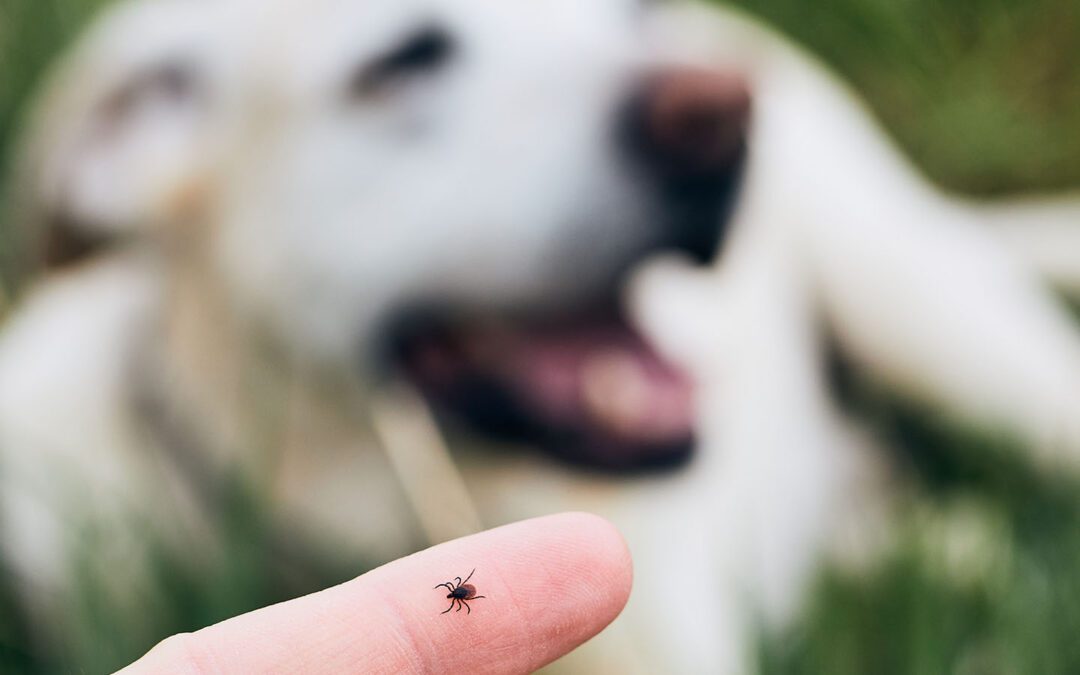As May rolls around, so does Lyme Disease Awareness Month—a crucial time to shed light on the dangers posed by ticks and the importance of protecting our furry friends from these tiny yet troublesome parasites. Ticks are not only a nuisance; they can also transmit serious illnesses such as Lyme disease, making prevention and awareness essential components of responsible pet ownership. In this blog post, we’ll delve into the intricacies of tick-borne diseases, how ticks attach to their hosts, safe tick removal techniques, and proactive measures to safeguard your pet’s health.
Understanding the Threat: Tick-Borne Diseases
Ticks are notorious vectors for various diseases, with Lyme disease being one of the most prevalent and concerning. Caused by the bacterium Borrelia burgdorferi, Lyme disease can lead to a range of symptoms in pets, including fever, lethargy, lameness, and swollen joints. If left untreated, it can result in more severe complications affecting the heart, nervous system, and kidneys. Other tick-borne diseases such as Ehrlichiosis, Anaplasmosis, and Rocky Mountain Spotted Fever also pose significant risks to our pets’ well-being.
The Tick’s Modus Operandi: Attachment and Feeding
Ticks have a remarkable ability to latch onto their hosts with precision and stealth. Using specialized mouthparts, they embed themselves into the skin and commence feeding on blood. Contrary to popular belief, ticks do not jump or fly onto their hosts; instead, they wait patiently in grassy or wooded areas, clinging onto passing animals or humans. Once attached, ticks can remain engorged for several days, increasing the risk of disease transmission.
Safely Removing Ticks: A Step-by-Step Guide
Prompt and proper tick removal is crucial for minimizing the risk of disease transmission and preventing complications. Here’s a step-by-step guide to safely removing ticks from your pet:
1. Gather Your Tools: Prepare a pair of fine-tipped tweezers or a tick removal tool, gloves (if preferred), and antiseptic solution.
2. Grasp the Tick: Using tweezers or tick removal tool, grasp the tick as close to the skin’s surface as possible, ensuring a firm grip to avoid crushing the tick’s body.
3. Pull Firmly and Steadily: With gentle but steady pressure, pull the tick straight out without twisting or jerking. Be patient and persistent, as it may take some time for the tick to release its hold.
4. Dispose of the Tick: Place the tick in a container with rubbing alcohol to kill it, or flush it down the toilet. Avoid crushing the tick with your fingers to prevent potential exposure to disease-causing pathogens.
5. Clean the Bite Area: After removing the tick, disinfect the bite site and your hands with antiseptic solution to reduce the risk of infection.
6. Monitor for Symptoms: Keep a close eye on your pet for any signs of illness in the days following tick removal. If you notice any unusual symptoms, consult your veterinarian promptly.

Proactive Prevention: Keeping Ticks at Bay
Prevention is key when it comes to protecting your pet from tick-borne diseases. Here are some proactive measures you can take to safeguard your furry companion:
1. Use Tick Preventatives: Consult your veterinarian to determine the most suitable tick prevention products for your pet, such as topical treatments, oral medications, or collars. Bravecto is sold in house or through our online pharmacy: Order Here. This medicated chew lasts for 12 weeks (about 3 months).
2. Perform Regular Checks: Routinely inspect your pet for ticks after outdoor activities, paying close attention to areas where ticks are commonly found, such as the ears, neck, and between the toes.
3. Maintain a Tick-Free Environment: Keep your yard well-maintained by mowing the lawn regularly, removing leaf litter, and creating barriers to prevent wildlife from entering.
4. Avoid Tick Hotspots: Steer clear of heavily wooded or grassy areas where ticks thrive, especially during peak tick season in spring and summer.
By arming yourself with knowledge and taking proactive steps to prevent tick infestations, you can help keep your beloved pet safe and healthy year-round. This Lyme Disease Awareness Month, let’s join forces to raise awareness, advocate for preventive measures, and empower pet owners to combat the threat of ticks effectively.
Together, we can turn the tide against tick-borne diseases and ensure a brighter, tick-free future for our furry companions.
Stay informed, stay vigilant, and stay tick-savvy!


